Sharlyn J. Lauby's Blog, page 17
October 3, 2024
5 Business Lessons Learned Using a Hobonichi Techo Planner

Estimated reading time: 4 minutes
Regular readers of HR Bartender know that I’m a planner. Earlier this year, I announced that I was trying out a new life planner called a Hobonichi Techo. It’s allowing me to bring together my planning, journaling, and commonplace bookinto a single place.
Since I’m really enjoying my Hobonichi Techo experience, I’ve decided to use it again in 2025. As I was making the decision on what planner version to buy, I realized a few things that not only apply to my planner experience but to business in general. Regardless of your planning systems, you might find these to be helpful as well.
Form and function matter. I believe that planning is very personal. My system might not work for everyone else. And someone else’s system might not work for me. Some people like planning in an analog way, others prefer digital, or maybe a combination of both. The same is true for organizations. Planning is part of culture. Companies have a way they like to plan. I’ve worked for companies that each had a different planning process. As a consultant, I work with companies that choose to plan differently. The bottom-line is to plan using the tools that help you successfully accomplish your goals. Adjust those things that don’t work for you. One of the first things I noticed in my planner is there were pages I didn’t know what to do with. Like a page to put addresses. I didn’t need a page to do that, so I found another use for the page. Individuals (and organizations) might find themselves in a similar situation. Maybe they have a planning method that they like 80% of the time. The other 20% doesn’t apply to them or they just don’t like it. Instead of throwing the whole system away … see if there’s a way to adjust the 20% to fit your needs. Just remember to monitor the process and ensure the adjustment yields the intended result. When you make a mistake, fix it. When I purchased my planner this year, I joined a couple of online communities to get some ideas of how others were using their planners. One of the things I noticed was comments about messing up a page – and wanting to throw the whole planner away. There were a lot of comments like this. I will admit that I have perfectionist tendencies, so this was a moment for me to realize that I need to figure out what to doPlanning is an important activity. As individuals, we make plans for our personal and professional lives. Organizations make strategic and operational plans. Our plans help us succeed. Spend time understanding how to plan. Thinking about how we like to plan and what works for us isn’t a frivolous exercise. It’s an investment into our future.
Image courtesy of Hobonichi Techo
The post 5 Business Lessons Learned Using a Hobonichi Techo Planner appeared first on hr bartender.
October 1, 2024
Understand How You Like to Collaborate

Estimated reading time: 3 minutes
One of the things I’ve noticed lately is an increase in conversations about collaboration. CEOs talking about bringing employees back to the office because it’s better for “collaboration”. Individuals describing themselves as “enjoys collaboration”. And people sending emails saying, “Let’s collaborate!”. There’s just a lot of talk about collaboration.
That’s not necessarily a bad thing. Collaboration is good and important for business success. But I believe that collaboration isn’t as simple as “Let’s collaborate!”. There are layers to collaboration, and it could be helpful for people to spend some time thinking about how they like to collaborate. Knowing the conditions that someone enjoys collaboration could make a big difference in the result.
I recently read Harvard Business Review’s 10 Must Reads on Collaboration and one of the articles talked about understanding your collaboration options. I thought it was a great way to think about how someone likes to collaborate. I don’t want to give away the article, but here are four types of collaboration to consider:
OPEN: Collaborating in an open environment implies that you’re willing to work with individuals from basically anywhere. This includes inside and outside the organization. And it also implies that someone is willing to collaborate with someone who might know more about a subject than they do. This could be a great way to generate a wide variety of ideas.
CLOSED: By contrast to open collaboration, the closed collaborative environment says that someone is willing to collaborate but with a select group of people. There’s nothing wrong with this approach but it does mean that we have to know who we want to collaborate with … and why. This approach could be perfect when you’re familiar with a subject and want to work on problem-solving with a small group.
HIERARCHIAL: This approach factors in the organizational hierarchy. Realistically, sometimes when we’re problem-solving, we do have to keep “what senior management wants” in mind. It might make sense to collaborate with a group that understands the goal and has the internal / external network to make it happen.
FLAT: My take on the flat collaboration option is that this type of collaboration is focused on creating a win-win between the collaborators. There are times when we use the word “collaboration” in the spirit of reaching a mutually beneficial solution. The collaborators are each key stakeholders and are prepared to work together to find common ground.
I thought these different types of collaboration could be a starting point for someone to reflect on how they like to collaborate. I could definitely see someone saying, “I like open collaboration.” Or “Most of the time, I’m involved in hierarchical collaboration processes.”.
And when we are asked to participate in a collaborative process, it could be helpful to think about the role we’re going to have. Maybe we’re a subject matter expert being asked to participate in a closed collaborative process. Or we’re a department manager who is invited to take part in a flat collaborative process about an upcoming change.
Simply saying, “I like to collaborate.” might not be enough in today’s complex business environment. Think about how you like to collaborate so you can bring your best to the process. This also gives you the opportunity to identify if there are collaborative environments you want to learn more about and skills you would like to focus on to become a better collaborator.
Image capture by Sharlyn Lauby while exploring the streets of Dallas, TX
The post Understand How You Like to Collaborate appeared first on hr bartender.
September 29, 2024
Onboarding: 5 Things to Know Before Implementing a Buddy Program [Part 2]
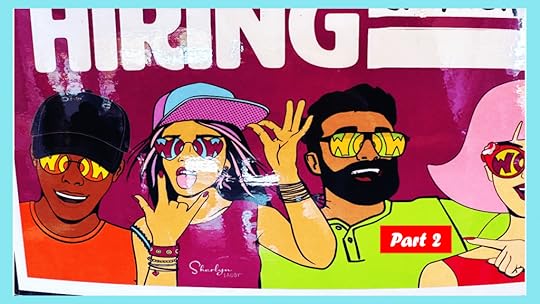
Estimated reading time: 3 minutes
Onboarding programs do two things: 1) welcome the new hire to the company and 2) provide the tools to be successful. On some level, giving employees the tools they need to be productive on the job is straight-forward. Companies have job descriptions that list the knowledge, skills, and abilities (KSAs) needed for the position. And they have training programs in place to support those KSAs.
While it might sound easy, the welcoming part might actually be more challenging. Companies need to decide what welcoming looks like. It could be a video from the CEO or a welcome basket filled with company-logoed tchotchkes. Those things are nice and should definitely be considered. They can help make a great first impression.
Many organizations look to buddy programs to give new hires a longer lasting welcome. A buddy program connects new hires with current employees for a specified period of time. The buddy is available to answer questions, make introductions, and show the new hire around. They are not a substitute for the manager or training. Their focus is on socialization.
However, buddy programs take some intentional thought and planning. Before implementing a buddy program, here are a few things to consider:
Support. Buddy programs involve the entire organization. Organizations have to take care of customers and produce excellent products or services. However, the first time a member of management says (or implies) that the buddy program isn’t a priority, the program doesn’t get the attention and resources it deserves. Benefits. Speaking of support, managers and employees will make the organization’s buddy program come alive. They need to know the WIIFM (What’s in it for me?). Managers need to be committed to selecting the right buddy for new hires. And employees need to view being a buddy as a benefit and not just another work assignment.Budget. Since a good portion of a buddy’s role is socialization, organizations will want to make sure that this can occur. And let’s face it, a lot of socialization and welcoming happens over coffee and lunches. We’re not talking about large sums of money, but buddies should be able to chat with new hires over coffee or take them out to lunch.Qualities. Think of this like selection criteria. Everyone in the organization should be on the same page about what makes a good buddy. Some of the qualities everyone will quickly agree on – dependable, credible, etc. Other qualities might be unique to your organization and industry.Results. Any time a program is implemented, organizations need to ask themselves, “What does success look like?” It might be through metrics like improved engagement and lower turnover. Or increased productivity. Maybe it doesn’t involve a number at all – success could be hearing new hires in stay interviews say that the buddy made a difference.I always remember this survey from Korn Ferry, 98% of executives say onboarding programs are a key factor in employee retention. However, nearly a quarter (23%) have a program that lasts one day. Approximately one-third (30%) said their program lasts a week. While the survey is from a few years ago, I believe the data still has merit. Buddy programs are an opportunity for companies to add value to their existing onboarding efforts.
Buddy programs have the potential to deliver big results. Everyone needs to be on board (no pun intended) with the program. It takes commitment – of people and resources – to make buddy programs work.
Image captured by Sharlyn Lauby while grabbing a bubble tea at Kung Fu Tea in Gainesville, FL
The post Onboarding: 5 Things to Know Before Implementing a Buddy Program [Part 2] appeared first on hr bartender.
September 26, 2024
Managers: The One Thing to Improve Employee Performance
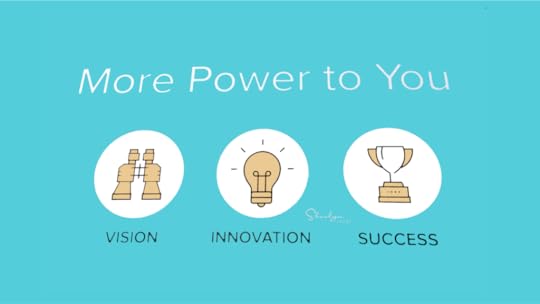
Estimated reading time: 3 minutes
Managers, you really can empower your team for success and cultivate a motivated and engaged workforce. Follow along as we uncover five steps to building a productive work environment.
Employees want to hear feedback about their performance. This isn’t a generational thing. Specifically, individuals like getting well-thought out feedback, with an emphasis on the “well-thought out” part.
When it comes to employee feedback, it can be easy to fall into the trap of not giving enough positive feedback. You know, the whole “No news is good news.” thing. But “no news is good news” isn’t a feedback program. Sure, organizations must give employees negative / corrective feedback when necessary. However, if the only time we call an employee is to deliver negative feedback, then they will avoid interacting with managers.
If there’s one thing that organizations could do to improve the performance of their team, it would be to focus on giving effective positive feedback. Here are five steps that can help:
Deliver timely feedback. When an employee does something great, tell them. Don’t wait weeks or months. There’s a connection between positively reinforcing behavior and encouraging it to continue. For instance, use a regularly scheduled one-on-one meeting to let an employee know about their performance.Be specific. There are times when the ubiquitous “Good job!” is acceptable. However, for real impact, feedback must be specific. Telling an employee that “I really appreciate getting your TPS report two days early. It helped me finalize my end of month reports.” conveys specifics that will be remembered. Give it value. Speaking of specifics, make sure to connect positive performance to the employee or company’s goals. Employee engagement happens when a person can connect their work to the bottom-line. So, it’s valuable to tell an employee their actions “helped close the deal” or “saved the department money”. Don’t fake it. Employees want genuine, authentic feedback. They can tell when it’s forced or insincere. Find your own words to express positive feedback to employees. Remember the more you deliver positive feedback, the easier it will be. Use the right medium. Every employee has their preferred ways of being recognized for good performance. Some are okay with public displays, others, not so much. When delivering positive feedback, use a medium that the employee is comfortable with. And if you’re not sure, ask them. “Hey – I’d like to recognize the great work you did on the client proposal. Are you okay with me bringing it up at our next department meeting?”One more thing…these feedback tips are not exclusive to managers. The same principles apply with peer-to-peer feedback. Be timely and specific. Deliver it in an authentic way using the right medium. Organizations can use this as the foundation for their internal feedback model. Positive feedback is a powerful tool that employees want to hear.
Image captured by Sharlyn Lauby after speaking at the HR Technology Conference in Las Vegas, NV
The post Managers: The One Thing to Improve Employee Performance appeared first on hr bartender.
September 24, 2024
Employee Conflicts and Misunderstandings Still Need an Investigation

Estimated reading time: 8 minutes
We’ve been talking a lot lately about dealing with workplace conflict. I thought it was very interesting the number of pre-emptive comments I saw about the possibility of employee conflicts before the U.S. presidential debates. It reminded me of my recent conversation with Alexander Alonso, PhD, chief knowledge officer at the Society for Human Resource Management (SHRM). He mentioned research indicating a significant increase in the acts of uncivil behavior at work.
Employee conflicts, even when the organization knows they might happen, still need to be investigated. We can’t simply say, “Oh, you know, this will all blow over in a few days.” Because it might not. It’s possible the conflict or misunderstanding might escalate into something bigger.
One of the challenges with this type of investigation is that the conflict is usually between two employees. They both have their own version of what happened. Often there are no witnesses. It’s often referred to as a “he said, she said” situation, regardless of the genders involved. The question becomes, what can human resources do?
To offer some insights, I reached out to my friend Jakub Ficner, director of partnerships at Case IQ. You might remember that Jakub and I chatted on The HR Bartender Show about the role of technology in workplace investigations. If you haven’t listened to the episode, I hope you will check it out when you get a chance.
Please remember that Jakub and I are not lawyers and today’s article should not be construed as legal advice. If you have detailed questions, they should be addressed directly with your friendly neighborhood labor and employment attorney.
Jakub, thanks so much for being here. Before we talk about investigations, let’s talk about expectations. In my experience, many of these type of “he said, she said” situations involve inappropriate language, comments, and/or hearsay. It could be swearing or passive/aggressive comments, trash talking, etc. How can organizations set expectations with employees regarding inappropriate language and behaviors?
[Ficner] Preventing misconduct begins with having well-defined and enforceable internal policies. In the employee handbook, be specific about the types of behaviors that are unacceptable, such as inappropriate language, derogatory comments, or passive-aggressive communication. Clarity is key – leaving no room for ambiguity ensures that employees fully understand what is off-limits.
To reinforce these standards, consider using real-life scenarios during harassment training to make expectations tangible. For example, role-play situations where tensions could arise, such as:
A coworker being promoted over someone else, A colleague taking credit for another’s work, or even, A competitive sports match outside of work.By walking through these scenarios, employees can see how they might react emotionally and why it’s critical to maintain professionalism, even under stress. This approach not only outlines what language and behavior are inappropriate but also highlights when people might be most vulnerable to making those mistakes, offering guidance on how to navigate those moments constructively.
When organizations first hear about an incident between employees, why is it important to investigate (versus dismissing it as a simple misunderstanding)?
[Ficner] Dismissing employee concerns without a proper investigation can significantly erode trust within the organization. When employees feel their issues are brushed off as misunderstandings, they may lose confidence in their employer’s commitment to creating a safe and respectful work environment. This sense of being unheard can lead to disengagement and a perception that their voices don’t matter.
Even if the incident doesn’t appear severe at first glance, it’s crucial to investigate any situation where an employee feels harassed or believes a company policy has been violated. By taking these concerns seriously, organizations demonstrate that they are committed to upholding their policies and ensuring fairness. Importantly, an investigation doesn’t always result in disciplinary action, but it serves as an opportunity to gather facts, assess the situation, and address any underlying issues before they escalate.
I totally agree with your comment about investigations not always resulting in disciplinary action. Obviously, when we start an investigation, we don’t know that the outcome will be that one person says one thing and the other person says something different. At the point the organization realizes there is no way to substantiate the comments, why is it important to finish the investigation?

[Ficner] Once an investigation has started, it’s essential to see it through to completion, even if the facts are unclear or it turns into a ‘he said, she said’ situation. Abandoning an investigation prematurely risks unfair outcomes. For example, if you dismiss the case without resolution, and the incident did happen, the reporting employee could continue to face harassment or even be retaliated against for speaking up. This can result in a more toxic workplace and expose the company to further liability.
On the other hand, if the accused person is unjustly found guilty of a policy violation without sufficient evidence, they could face unwarranted disciplinary action, which might damage their career and reputation. Additionally, this could lead to wrongful termination lawsuits or other legal actions against the company. Therefore, completing the investigation ensures that the process is thorough, fair, and balanced, helping protect both the individual employees and the organization from future harm.
We’ve talked before about the importance of properly closing the investigation. Can you share 2-3 things that the organization should consider when wrapping up an investigation where the concerns weren’t substantiated?
[Ficner] When closing an investigation where the concerns weren’t substantiated, there are a few critical steps that organizations should take to ensure fairness and maintain trust:
Ensure Psychological Safety and Prevent Retaliation: The primary concern should be to reassure all involved parties that they are protected from any form of retaliation. Whether it’s the reporter who brought up the concern or the individual who was accused, make it clear that any retaliatory actions will not be tolerated. This helps maintain a sense of safety and fairness in the workplace, showing that the organization values transparency and integrity in its processes.
Express Gratitude for Cooperation: It’s essential to thank both parties for their participation throughout the investigation, regardless of the outcome. This reinforces the idea that bringing forward concerns or cooperating in an investigation is always the right thing to do. By showing appreciation, you help build a culture of openness and encourage future reporting or cooperation, which is vital for fostering a transparent workplace environment.
Offer Closure and Clarity: While the concerns may not have been substantiated, providing clear communication about the outcome is critical. Explain the steps taken during the investigation, the findings, and why the conclusion was reached. This not only gives closure but also demonstrates that the investigation was thorough and fair, reducing any lingering doubts or frustrations from the parties involved.
Last question. Even when an incident isn’t substantiated, it can potentially have an impact on culture. How can organizations keep track of these incidents to ensure they are not the beginnings to a toxic work environment?
[Ficner] Even when incidents aren’t substantiated, they can still signal underlying issues that may affect workplace culture. Here’s how organizations can keep track of these incidents to prevent the onset of a toxic environment:
Implement a Case Management Platform with Data Analytics: Utilizing a comprehensive case management system like Case IQ allows organizations to record all reported incidents, regardless of the outcome. The built-in data analytics can help identify troubling patterns in complaints, such as recurring types of issues, frequently involved individuals, or high-risk locations within the organization.
Identify and Analyze Trends: By systematically collecting data on all incidents, you can detect trends that might not be apparent from isolated cases. For example, an increase in reports related to a specific department or type of behavior could indicate a systemic problem that needs addressing.
Inform Policy Updates and Training: The insights gained from analyzing these trends can guide you in updating company policies and tailoring employee training programs. This proactive approach ensures that you address potential issues before they escalate, effectively reducing the likelihood of future ‘he said, she said’ situations.

By keeping a close eye on all reported incidents and acting on the data, organizations can proactively strengthen their workplace culture and prevent minor issues from developing into more significant problems.
I want to thank Jakub for taking the time to share his experience with us. If you’re looking for some resources on conducting investigations, visit the Case IQ Resources page. It includes templates, ebooks, articles, and webinars.
I’ve said it before and I’ll say it again – in today’s work environments, we will not be friends with everyone. But that doesn’t mean that employees should treat each other with disrespectful or harassing language. When incidents happen, organizations can’t dismiss them. They always need to be investigated fully.
Image captured by Sharlyn Lauby after speaking at the Flora Icelandic HR Management Conference in Reykjavik, Iceland
The post Employee Conflicts and Misunderstandings Still Need an Investigation appeared first on hr bartender.
September 22, 2024
Why Organizations Need an Artificial Intelligence Policy [Part 1]
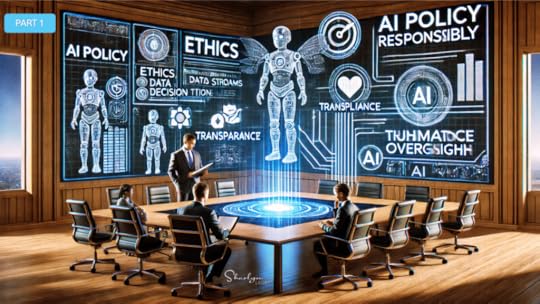
Estimated reading time: 8 minutes
Given some of artificial intelligence’s (AI) challenges right now, it might be tempting to say that AI isn’t the panacea that everyone expected it to be. Personally, I think we’re still very early in the AI adoption curve, so organizations need to continue to pay attention to what’s developing and conduct experiments to see how it works.
In the past, we’ve talked about the need for organizations to develop an AI strategy. Today, I want to talk about developing an internal AI policy. I had the opportunity to hear our friend Carrie Cherveny speak at SHRM’s 2024 Annual Conference on “Getting Smart About AI”, which was very informative. So, I asked Carrie if we could talk about developing AI policy and thankfully, she said yes.
Having an AI policy is a fundamental step to be ‘ready’ for AI in your workplace. An AI policy is now just as essential as, for example, your anti-harassment or Family and Medical Leave Act (FMLA) policies.
Carrie Cherveny is chief compliance officer and senior vice president of strategic solutions at HUB International. In her role, Carrie works with clients to develop strategies that ensure compliance and risk mitigation when it comes to benefits and employment practices. As always, please remember that her comments should not be construed as legal advice or as pertaining to any specific factual situations. If you have detailed questions, they should be addressed directly with your friendly neighborhood employment attorney.
Carrie, thanks for being here. Why do organizations need to consider having an internal AI policy (in addition to an AI strategy)?

[Cherveny] Today AI is everywhere. Did you catch any of the Olympic games? It seemed like more than half the ads were for AI platforms. In fact, on June 10, 2024, Apple announced the upcoming launch of Apple Intelligence – its new artificial intelligence technology that will be integrated into the release of iOS18. According to the Apple press release, ‘It harnesses the power of Apple silicon to understand and create language and images, take action across apps, and draw from personal context to simplify and accelerate everyday tasks’. Ready or not – AI is here. Having an AI policy is a fundamental step to be ‘ready’ for AI in your workplace. An AI policy is now just as essential as, for example, your anti-harassment or Family and Medical Leave Act (FMLA) policies.
Employers have some decisions to make. Employers have to decide if they will allow the use of AI in the workplace and whether AI will be limited to a specific platform. Likewise, employers will have to identify the departments and roles that are permitted and/or prohibited from using AI. Well-crafted policies are designed to specifically address these questions and more.
When it comes to drafting policies, often human resources departments take the lead. Who should be involved in helping to develop an AI policy?
[Cherveny] AI has the potential to impact every corner of your organization. This means that your organization’s AI policy should be multifaceted and include various subject matter disciplines. Organizations should establish an AI committee and include, at a minimum:
Legal/in-house counselHuman ResourcesFinance/AccountingOperationsOther subject matter expert (SME) committee members will be dependent on the nature of the business. For example, a healthcare organization would likely include its Health Insurance Portability and Accountability Act (HIPAA) Privacy Officer. A financial services firm may include its compliance department along with a data privacy officer. Employers with union employees may want to include a union representative.
Once we determine who should be involved in helping to develop an AI policy, is there a framework they can follow to identify key areas of consideration?
[Cherveny] Not only should the AI committee work together to develop a comprehensive policy, but the committee should also be charged with vetting the AI tools. For example, a committee should develop a robust discovery process to better understand the vendor’s reputation, how it handles the information entered into its system, and its data security and cyber security measures.
The organization should draft comprehensive, clear, and unambiguous ‘rules of the road’ for the use of AI in the workplace including, for example:
Prohibited uses of AI. Consider the kinds of data that employees may never put into an AI platform such as Personally Identifiable Information (PII), Protected Health Information (PHI), company confidential information (financials, methodologies, trade secrets, attorney-client privileged information, etc.).Permitted uses of AI. When may an employee use AI in the performance of their job? For example, AI may create efficiencies for general research, creating/identifying sample documents, wordsmithing a written document or job aids (such as skill development, learning a new system or a tool in a system such Excel pivot tables). Required Safeguards. Will employees be required to ‘fact check’ data or findings sourced through AI? We’ve all read about the attorneys who turned in briefs to the courts that were filled with fictitious cases and citations. Employees should be required to check reliable sources to ensure that the AI findings are accurate and credible. There are some AI platforms that will also provide the citations and sources of its findings. For example, Microsoft CoPilot provides the citations and sources for its findings. However, even when the AI provides its sources, the end-user should also check sources outside of the AI references to ensure complete, thorough, and accurate work. Required notices and disclosure. Will you require your employees to disclose when they use AI? For example, under a new New York state law, users are required to disclose when they use AI. Notice and disclosures are quickly becoming a best practice in AI policy requirements. Employers may want to consider requiring employees to disclose the purpose or reason for using the AI, identify the platform(s) used, and a summary of the results that were included in the work product.Required attribution and citations. Will you require employees to identify the specific AI tools upon which they relied when developing their work product? This is a little like a notice or disclosure policy but requires the employee to specifically identify the AI tool or platform – not simply the use of AI.Since we’re having an AI conversation, I asked Microsoft CoPilot for a ‘sample employer AI use policy for the workplace’. Here’s what it produced:
AI Tool Usage Policy [template created by Microsoft CoPilot]
Policy Brief & Purpose: Our company’s AI tool usage policy aims to outline the responsible and secure use of artificial intelligence (AI) tools in the workplace. This is particularly important when handling sensitive data and proprietary company and customer information.
Scope: AI tools are revolutionizing our work by automating tasks, enhancing decision-making, and providing insights. However, they also introduce challenges regarding information security and data protection.
Purpose: The purpose of this policy is to ensure that all employees use AI tools in a secure, responsible, and confidential manner, adhering to the requirements for evaluating security risks and protecting confidential data.
Policy Statement: We recognize the potential risks AI tools pose to our operations and customers. We are committed to maintaining the confidentiality, integrity, and availability of all company and customer data.
Security Best Practices: Employees are expected to follow these best practices when using AI tools:
Evaluation of AI Tools: Before using any AI tool, evaluate its security features, terms of service, and privacy policy. Check the tool developer’s reputation and any third-party services involved.Protection of Confidential Data: Do not upload or share confidential, proprietary, or regulated data without prior approval from the appropriate department.Access Control: Do not grant access to AI tools outside the company without proper approval and compliance with security requirements.Use of Reputable AI Tools: Only use AI tools that are reputable and meet our security and data protection standards.Compliance: All employees must comply with this policy as part of their employment terms. Any violation may result in disciplinary action up to and including termination of employment.
Consider this template a starting point, and you should modify it based on your specific needs and legal requirements. It’s also advisable to consult with legal counsel to ensure compliance with all applicable laws and regulations. Remember, an effective policy is one that is clear, comprehensive, and enforceable.

I want to thank Carrie for sharing her knowledge with us. And I love that she included the sample AI policy template to get our thinking started! If you want to learn more, check out this archived webinar from HUB International on “Humanizing HR in the Age of AI: Embracing the Technology Revolution”.
Once organizations decide that they need to create an AI policy, then the challenge begins of determining what to include in the policy. Carrie mentioned some initial considerations here, but in our next article, we’re going to do a deeper dive into the components of an artificial intelligence policy. Stay tuned!
Image created by DALL-E demonstrating the importance of human oversight in AI
The post Why Organizations Need an Artificial Intelligence Policy [Part 1] appeared first on hr bartender.
September 19, 2024
Manage Bias in Fair Chance Hiring
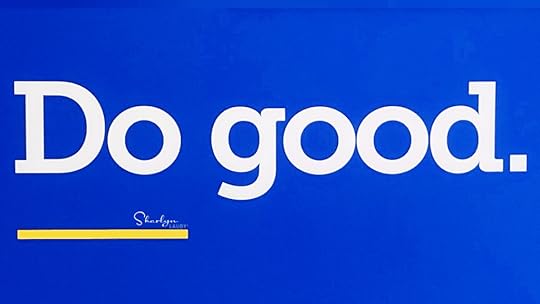
Estimated reading time: 4 minutes
Many organizations are considering fair chance hiring programs to find qualified candidates. Fair chance hiring – also known as a second chance hiring – is when the organization adopts the practice of hiring individuals with a criminal record.
There are several advantages to fair chance hiring, and in an earlier article, we discussed how to manage objections related to implementing a fair chance hiring program. It’s worth noting that an objection is simply disagreeing with something. We might be able to change someone’s objection with facts and good communication.
So, in the case of fair chance hiring programs, if someone said that they objected to the program because it would increase cost-per-hire and we could show it wouldn’t … then they might decide there is no reason to object any longer.
Which brings me to today’s conversation. Bias is different than an objection. Bias is defined as a prejudice that’s usually unfair in favor of or against a person or group. An individual can overcome a bias, but it takes time. It also takes self-awareness, and that’s more involved than simply sharing facts.
Organizations will need to deal with both objections and bias as they are discussing the implementation of a fair chance hiring program. Here are some things to consider when addressing bias associated with hiring an individual with a criminal record.
Consider assessments focused on self-awareness. A necessary first step in overcoming a bias is realizing one exists. Organizations might be reluctant to initially confront an individual’s bias directly. But that doesn’t mean the bias will go away. Sometimes an activity that allows an individual to discover their biases on their own, could open the door for discussion. There are implicit bias tests. In fact, Harvard University offers one on their Project Implicit website.
Identify the types of bias. There are several types of bias including first-impression, negative emphasis, contrast, and the halo/horn effect. Organizations should talk about bias in their recruiting skills training, performance management training, management development programs, and more. When developing examples for these training programs, include an example that mentions a person with a criminal record. For instance, how will a supervisor react if they hear about a candidate’s criminal history during an interview?
Provide bias training. Not only should organizations include a discussion of bias in their training programs, but they might want to offer separate unconscious bias training sessions. The decision to offer a separate program is based on several factors including the other training topics currently being offered. There are lots of professional training companies that offer unconscious bias training, or the company can design their own.
Offer webinars and podcasts. Listening to webinars and podcasts is extremely popular and a great source of learning. The organization can encourage employees to listen to an outside show like “Breaking the Bias” hosted by Consciously Unbiased. This podcast has dedicated several episodes to the criminal justice system and fair chance hiring. Another option could be for the organization could host their own webinar or podcast on the subject.
Share books that deal with bias. A learning library can be a great option for organizations, especially ones with hybrid or remote workforces. Employees can learn at their own pace. Books could also be a part of in-person training programs. For example, participants in a management development program could be given a copy of The New York Times bestseller “Blindspot: Hidden Biases of Good People” by Mahzarin Banaji and Anthony Greenwald. After reading the book, there could be a facilitated discussion about bias.
Encourage teams to “check” each other. As individuals become more self-aware, hopefully they will become more comfortable asking people to “check” them if their biases start to show. This doesn’t have to be a mean, confrontational exchange. For example, this Fast Company article on “How to confront bias without alienating people” talks about addressing the issue from a place of trust and shared values.
The reality is that recognizing our own biases and dealing with workplace bias is tough. The good news is that organizations already have activities in place to incorporate bias awareness – training, webinars, team development, etc. The key is conducting a content review and making sure there are examples that include individuals with criminal records.
Even when the organization is very supportive of fair chance hiring, it makes sense to include examples of individuals with criminal records in learning activities. The organization might be supportive but discover a manager or an employee isn’t aware of their bias and it’s holding the program back. Or an individual with a criminal record might get hired and find that they are being treated differently.
Research shows that diverse organizations can improve team performance by up to 30% and outperform their competition by 36% in profitability. But that is predicated on making diversity, inclusion, equity, and belonging work for everyone.
Image captured by Sharlyn Lauby while exploring the streets of Washington, DC
The post Manage Bias in Fair Chance Hiring appeared first on hr bartender.
September 17, 2024
Employee Retention Starts Before the Job Interview

Estimated reading time: 5 minutes
(Editor’s Note: Today’s article is brought to you by our friends at isolved , a trusted leader in human capital management technology solutions. Their Predictive People Analytics solution was recently awarded best talent intelligence solution at the HR Tech Awards . Congratulations to them and enjoy the article!)
I recently participated in a lunch and learn session with the isolved People Heroes Tour team and some of their clients on the topic of employee retention. It was a very informative session, and I hope you’ll check out the recording.
While I was a speaker, I also had time to be a participant and hear a panel of isolved clients talk about their recruiting processes. It occurred to me as I was listening to their stories, that employee retention really starts before the job interview. Here are four components of the hiring process that link to employee retention.
Employment Brand. Organizations should be constantly promoting their employment brand, even when they do not have job openings. Hopefully, this will attract interested individuals to your career site where they can opt-in to hear about company information and openings. Recruiters can use this data to build talent pipelines and stay in touch with potential candidates.
Learning about company culture and expressing interest in a job should be easy. The link to employee retention is two-fold. First, if the organization’s brand is less than desirable, it will result in fewer people wanting to engage. Next, if the company’s technology is difficult to use, it will result in fewer people actually applying. The good news is that today’s technology allows organizations to have customized applicant tracking systems to suit their varied needs.
Recruiting Strategy Meetings. When a job opening does occur, the hiring manager and recruiting team can meet to put together a strategy. This is a great time to discuss the job requirements, team dynamics, possible recruiting sources, and the overall hiring process. It’s also important to confirm a timeline for the hiring process because delays can be costly in so many ways – losing great candidates to another offer, stress and frustration on the current team because they’re picking up extra work, and possibly additional sourcing expenses.
I believe that good processes yield good outcomes. When organizations conduct recruiting strategy meetings, they create and utilize a good process. If managers are rushed to finalize hiring, they often make decisions … well, that they probably wouldn’t have made otherwise. You know what I mean. These bad decisions impact employee retention.
Job Descriptions / Job Postings. I mentioned in the last section that one of the topics to discuss during the recruiting strategy meeting is the job. This can be the perfect time to have the hiring manager confirm the job description. Even when we recruit for the same roles on a regular basis, I would still have the hiring manager confirm the job description. It shouldn’t take long, and the job description is what we use to write job postings, draft interview questions, screen applications / resumes, and ultimately make a hiring decision.
I’ve learned some lessons about job descriptions the hard way. Some of you might have too. I may have assumed that the job description was accurate, only later to discover that the hiring manager had “made a few small adjustments” – which translated to something bigger. Obviously, if you’re recruiting for the wrong job, that impacts hiring and potentially employee retention.
Candidate Experience. Like employee retention, the candidate experience starts before the interview. It includes interacting with the company’s career site, applying for a job, and all the subsequent interactions. Organizations will want candidates to have good first impressions of the organization. For example, just scheduling an interview should be easy. Candidates should be able to confirm interview dates and times that work with their schedule.
Organizations cannot forget that the candidate is interviewing the company as much as the company is interviewing the candidate. What candidates experience has an impression on whether they will take the job. It also sets the stage for the employee experience. It’s not unreasonable for candidates to expect everything they were told during the interview is true. And if it’s not … well, that will have an impact on employee retention.

Regardless of what’s happening in the job market, the organization’s talent acquisition process is a first impression of the company. Make it the best it can be. While organizations might not be able to completely eliminate turnover, it is possible to manage it effectively. By looking at the organization’s talent acquisition process, it is possible to improve in areas that will positively impact employee retention.
Create and monitor the organization’s employment brand.Conduct recruiting strategy meetings.Confirm the accuracy of job descriptions.Cultivate a positive candidate experience for all.The good news is that today’s talent acquisition technologies can provide you with features to manage these four critical areas. From a tech standpoint, the plus for the company is that the information gathered during the candidate experience (i.e., the interview) seamlessly transfers to the employee experience (i.e., onboarding and HRIS platforms).
If you’re looking for a deeper dive into the connection between the candidate experience and employee experience, isolved’s fourth-annual HR Leaders Report: Champions of Change analyzes the employer-employee divide and how HR decision makers are delivering employee experiences that matter even before the job interview.
I also encourage you to check out isolved’s upcoming events and live and on-demand webinars. Some of the sessions are eligible for recertification credits with the Society for Human Resource Management (SHRM) and the Human Resources Certification Institute (HRCI).
No one wants to spend a ton of time and company resources hiring an employee only to have them quit after a few weeks or months. As organizations are looking at their operational goals and budgets for next year, this is a perfect time to review talent strategies, so the company hires and retains the best employees.
The post Employee Retention Starts Before the Job Interview appeared first on hr bartender.
September 15, 2024
5 Offboarding Activities for a Respectful and Efficient Employee Departure
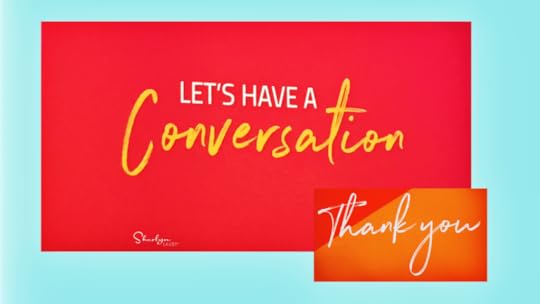
Estimated reading time: 3 minutes
Organizations need to realize that creating a respectful and efficient exit for employees is just as important as onboarding when an employee is hired.
Onboarding programs give new hires the tools they need to be successful. They welcome the new hire to the organization, provide knowledge and training, and create a roadmap for success.
Offboarding is the process associated with employee departures. The great news about offboarding programs is that they can in some respects mirror the onboarding process. Organizations can even use their onboarding technology for offboarding.
Regardless of whether an employee is leaving the organization voluntarily or involuntarily, the exiting employee should be treated with respect, provided information, and given a checklist of things that need completion. If your organization doesn’t have a formal offboarding process, here are a few activities to get started:
Get buy-in from the management team. Like onboarding, offboarding isn’t a “human resources program”. Many individuals play a role in the offboarding process: department managers, payroll, IT, security, and HR. Offboarding employees becomes an important piece of today’s recruiting strategy regardless of the unemployment rate, especially when rehiring employees is common. Include contingent workers. Organizations have increased their use of freelancers, contractors, and consultants. This often means there are more non-employees with security badges, company technology, and software licenses than ever before. Don’t forget to include this group when it comes time to craft an offboarding program.Have a policy. Speaking of programs, outline what needs to take place when an employee (or contractor) leaves. This is a great “sticky note” activity. Call a meeting of key stakeholders (#1 above) and give everyone involved in the offboarding process a package of stickies. Have them post on the walls all of the things that need to happen when someone leaves. You can use this information to craft a checklist.Create a checklist. With the information from the policy (#3 above), group the activities by time and department. Start with when an employee gives notice or a consultant’s contract is ending. Outline what needs to happen right away and those activities that need to take place closer to the individual’s last day. Educate employees. The last group of people the company needs to get onboard with the program are employees. There are probably going to be things on the checklist (See #4) that the employee needs to do, like make sure their address is current with payroll. When someone announces their departure, take a moment to share the checklist with them and describe how things are going to happen. It will give the employee and/or contractor the information they need to understand the transition.One final thing. If organizations are trying to get honest feedback from employees (and contractors) during an exit interview, it only makes sense to treat exiting employees with respect. Even when the organization might be disappointed that the person is leaving. Because you never know when they might want to come back. Or when they might share a job opening with a friend. Or maybe even refer a customer.
Image captured by Sharlyn Lauby while exploring the streets of Nashville, TN
The post 5 Offboarding Activities for a Respectful and Efficient Employee Departure appeared first on hr bartender.
September 12, 2024
7 Activities Designed to Solicit Employee Feedback

Estimated reading time: 3 minutes
Feedback is an essential part of business. Organizations solicit feedback from customers all the time, so it makes sense that they would also solicit employee feedback. Human resources is often involved in gathering employee feedback, but managers play a significant role as well.
Managers already have a full-plate of responsibilities. It’s possible they might push back on the task of gathering feedback saying, “I don’t have time for extra meetings to gather employee feedback.” Truth is…managers have several opportunities to solicit employee feedback in the activities they already do. Here are seven examples of regular activities that managers already do that they can use to get employee feedback:
Onboarding: Managers are responsible for helping new hires get set up for success. They should use onboarding time to ask new hires their perceptions of the organization and the things that the manager can do to help the employee be successful. A question managers might want to ask is “What’s one thing your last employer did that you’d like to see here?”. Training: Many organizations are using training sessions to build camaraderie and recognize employees. Managers can set aside some time during training to engage in a group conversation. Or they can take the group out after training for some celebration and have a little work discussion. One question managers can pose to the group is “What can the company do to make sure training sticks?”.Department Meetings: Don’t forget that the department’s regular staff meeting can be a valuable source of employee feedback. And typically, the meetings are held on a regular basis, so no extra scheduling is necessary. Managers can ask the team what they would think about a new goal or a change in policy.Performance Reviews: Regardless of your company’s opinions of the annual performance review, at some point, managers and employees have to discuss performance. Managers can use this discussion to solicit feedback about their own performance. A common question to include might be “Name one thing I can do to help you achieve your goals.”.One-on-One Meetings: Regardless of whether your organization has formal one-on-one meetings, the concept of regular meetings with an employee happens everywhere. Managers can use the meeting as an opportunity to ask employees about their goals and career aspirations. A stay interview question might be valuable like “Tell me one thing you like about working here.”.Surveys: Yes, there are the traditional employee engagement surveys managed through human resources, but today’s technology allows organizations incredible flexibility when it comes to surveys. Managers can send out pulse surveys, a simple one-question survey that provides fast feedback. Offboarding: Just as managers help employees enter the organization successfully, they do the same when an employee decides to leave. Many companies conduct exit interviews, giving employees the opportunity to discuss their employment experience. Managers can spend time with the employee as well asking them the reasons they left and possibly if they would consider returning in the future.Managers are right – they do have a lot on their plate. But, since they have so many interactions with employees, they also have more opportunities to ask for feedback. Even if it’s just one question. The information they could receive would be incredibly valuable for the manager and the organization.
Image captured by Sharlyn Lauby after speaking at the SHRM Annual Conference in Las Vegas, NV
The post 7 Activities Designed to Solicit Employee Feedback appeared first on hr bartender.
Sharlyn J. Lauby's Blog
- Sharlyn J. Lauby's profile
- 10 followers



